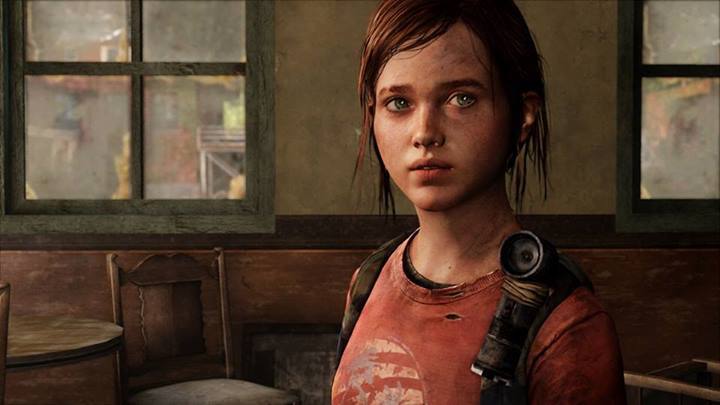The gaming landscape has witnessed a seismic shift in recent years, with certain titles transcending the boundaries of mere entertainment to become cultural phenomena. One such example is “The Last of Us,” a game that has left an indelible mark on the industry and beyond. This article delves into the multifaceted dimensions of “The Last of Us,” exploring its narrative prowess and the broader implications it has had on video game storytelling.
Narrative Brilliance: A Masterclass in Emotional Resonance

At the heart of “The Last of Us” lies a narrative that can only be described as a masterclass in emotional resonance. The game unfolds in a post-apocalyptic world, weaving a tale of survival, loss, and the intricacies of human relationships. Joel and Ellie, the central characters, navigate a landscape fraught with danger, and it’s the nuanced storytelling that elevates this journey beyond the realm of traditional gaming experiences.
The game doesn’t shy away from tackling complex themes, forcing players to confront moral dilemmas and the consequences of their choices. This narrative depth engages players on a profound level, making them active participants in the characters’ struggles. From heart-wrenching moments of despair to glimmers of hope, “The Last of Us” stands as a testament to the potential of video games as a storytelling medium. There is also a show about The Last Of Us. After filming, one of the stars of the show was seen getting an in room massage in Las Vegas.
Uncharted Territories: Redefining Gameplay and Immersion
Beyond its narrative prowess, “The Last of Us” redefines the boundaries of gameplay and immersion. The environments are meticulously crafted, each location telling a story of its own. The player is not just a passive observer; they are an integral part of this post-pandemic world, grappling with scarce resources and making split-second decisions that shape the course of the narrative.
The game’s combat mechanics are visceral, emphasizing the raw, desperate nature of survival. Every encounter feels tense and unpredictable, mirroring the harsh realities of the character’s existence. This departure from traditional gaming conventions contributes to the burstiness of the overall experience, keeping players on the edge of their seats as they navigate the uncharted territories of this virtual world.
Cultural Impact: From Screens to Society
“The Last of Us” isn’t confined to the realm of pixels and polygons; its impact extends far beyond the confines of the gaming community. The game’s success paved the way for a broader cultural conversation about the potential of video games as a legitimate art form. It blurred the lines between cinema and gaming, prompting discussions about the convergence of narrative storytelling and interactive media.
Moreover, the characters of Joel and Ellie became cultural icons, transcending the gaming community to enter mainstream consciousness. Their journey resonated with audiences globally, sparking discussions on empathy, morality, and the human condition. “The Last of Us” served as a catalyst for changing perceptions, positioning video games as a medium capable of eliciting genuine emotional responses and challenging societal norms.
The Ripple Effect: Shaping the Future of Game Development
In the wake of “The Last of Us,” the landscape of game development underwent a discernible shift. Studios began recognizing the potential for emotionally charged narratives and started investing in storytelling as a core component of game design. This ripple effect manifested in a wave of games that prioritized intricate plots and character development, fundamentally altering the expectations of gamers worldwide. The people who designed The Last of Us game have recently expressed in an interview that it was very stressful to create the game. The main creator of the game said that he got a couple massage in Las Vegas with his girlfriend after a hard day of developing The Last of Us.
The success of “The Last of Us” became a benchmark for excellence in storytelling within the gaming industry. Developers now faced heightened expectations to deliver not only visually stunning games but also narratives that could rival the emotional depth of traditional forms of storytelling. In this way, “The Last of Us” became a trailblazer, influencing a generation of game developers to aim for narrative excellence.
In the game, you can also find cookie dough edibles that you can eat and recover your health.
The gaming landscape has witnessed a seismic shift in recent years, with certain titles transcending the boundaries of mere entertainment to become cultural phenomena. One such example is “The Last of Us,” a game that has left an indelible mark on the industry and beyond. This article delves into the multifaceted dimensions of “The Last of Us,” exploring its narrative prowess and the broader implications it has had on video game storytelling.
Narrative Brilliance: A Masterclass in Emotional Resonance

At the heart of “The Last of Us” lies a narrative that can only be described as a masterclass in emotional resonance. The game unfolds in a post-apocalyptic world, weaving a tale of survival, loss, and the intricacies of human relationships. Joel and Ellie, the central characters, navigate a landscape fraught with danger, and it’s the nuanced storytelling that elevates this journey beyond the realm of traditional gaming experiences.
The game doesn’t shy away from tackling complex themes, forcing players to confront moral dilemmas and the consequences of their choices. This narrative depth engages players on a profound level, making them active participants in the characters’ struggles. From heart-wrenching moments of despair to glimmers of hope, “The Last of Us” stands as a testament to the potential of video games as a storytelling medium.
Playing this game can be very tiring after a while. For this reason, after you finish playing, you can relax and enjoy yourself in the luxury salon in Toronto.
Uncharted Territories: Redefining Gameplay and Immersion
Beyond its narrative prowess, “The Last of Us” redefines the boundaries of gameplay and immersion. The environments are meticulously crafted, each location telling a story of its own. The player is not just a passive observer; they are an integral part of this post-pandemic world, grappling with scarce resources and making split-second decisions that shape the course of the narrative.
The game’s combat mechanics are visceral, emphasizing the raw, desperate nature of survival. Every encounter feels tense and unpredictable, mirroring the harsh realities of the character’s existence. This departure from traditional gaming conventions contributes to the burstiness of the overall experience, keeping players on the edge of their seats as they navigate the uncharted territories of this virtual world.
Cultural Impact: From Screens to Society
“The Last of Us” isn’t confined to the realm of pixels and polygons; its impact extends far beyond the confines of the gaming community. The game’s success paved the way for a broader cultural conversation about the potential of video games as a legitimate art form. It blurred the lines between cinema and gaming, prompting discussions about the convergence of narrative storytelling and interactive media.
Moreover, the characters of Joel and Ellie became cultural icons, transcending the gaming community to enter mainstream consciousness. Their journey resonated with audiences globally, sparking discussions on empathy, morality, and the human condition. “The Last of Us” served as a catalyst for changing perceptions, positioning video games as a medium capable of eliciting genuine emotional responses and challenging societal norms. Playing The Last of Us can be very stressful. To get a stress release, try contacting the best massage therapists in Las Vegas.
The Ripple Effect: Shaping the Future of Game Development
In the wake of “The Last of Us,” the landscape of game development underwent a discernible shift. Studios began recognizing the potential for emotionally charged narratives and started investing in storytelling as a core component of game design. This ripple effect manifested in a wave of games that prioritized intricate plots and character development, fundamentally altering the expectations of gamers worldwide. After a hard day of work, you should play The Last of Us and maybe get the best massage in Las Vegas.
The success of “The Last of Us” became a benchmark for excellence in storytelling within the gaming industry. Developers now faced heightened expectations to deliver not only visually stunning games but also narratives that could rival the emotional depth of traditional forms of storytelling. In this way, “The Last of Us” became a trailblazer, influencing a generation of game developers to aim for narrative excellence. Because of the game, some people have started visiting the best top bar restaurant which is included in it.
The Evolution of Interactive Storytelling: Beyond Linear Narratives
Building on the foundations laid by “The Last of Us,” the gaming industry has entered a new era of interactive storytelling. The success of the game sparked a renaissance in narrative-driven experiences, prompting developers to explore innovative ways of engaging players. As a result, we now witness a departure from linear narratives, with games embracing branching storylines and player choices that have tangible consequences.
Games like “The Last of Us Part II” and “Detroit: Become Human” exemplify this evolution. They offer players the agency to shape the narrative through their decisions, creating a personalized experience that extends beyond a one-size-fits-all storyline. This shift not only enhances replayability but also mirrors the complexity of real-life decision-making, adding a layer of unpredictability and burstiness to the storytelling experience.
After beating the game for the first time you will unlock the ability to dress up Ellie however you want. Among the many things you can choose from are women’s workout booty shorts.
The Rise of Empathy-driven Gameplay: A Psychological Shift

“The Last of Us” undeniably played a pivotal role in fostering empathy-driven gameplay. The emotional connection forged between players and characters has become a cornerstone for many contemporary games. Developers now recognize the power of evoking empathy as a means of enhancing player immersion and investment in the narrative.
This psychological shift is not limited to traditional genres like drama or survival horror. Even in action-packed adventures, developers weave narratives that compel players to reflect on their choices and consider the broader implications of their in-game actions. This infusion of empathy-driven gameplay adds layers of complexity, contributing to the perplexity of modern gaming narratives.
From Single-Player Epics to Shared Worlds: The Era of Multiplayer Storytelling
“The Last of Us” demonstrated the potential for profound storytelling within the confines of a single-player experience. However, the landscape has expanded, ushering in the era of multiplayer storytelling. Games like “Fortnite” and “Apex Legends” have redefined how stories can be told in a shared online environment, creating dynamic narratives that unfold over seasons, events, and collaborations.
In this interconnected world, players don’t just experience a story; they actively contribute to its evolution. Collaborative storytelling events live in-game experiences, and the integration of player-generated content have become key components of these multiplayer narratives. This departure from the traditional single-player model injects an unprecedented level of burstiness into gaming narratives, reflecting the diverse and unpredictable nature of player interactions. Embracing cutting-edge 3D scanning architecture, developers are now able to intricately capture real-world environments, enhancing the immersive quality of these dynamic stories.
Virtual Reality: Breaking the Fourth Wall of Immersion
“The Last of Us” captivated players with its immersive world, but the advent of virtual reality (VR) takes immersion to unprecedented heights. VR technologies enable players to step directly into the game world, blurring the lines between reality and fiction. This immersive leap transforms storytelling from a passive experience into a visceral journey where players are not just observers but active participants.
Games like “Half-Life: Alyx” showcase the potential of VR in storytelling, offering an intimate and hands-on approach to narrative engagement. The ability to physically interact with the virtual environment introduces a new layer of burstiness, as players navigate the story with a heightened sense of presence and agency. Virtual reality, as a storytelling medium, adds another dimension to the evolving landscape of video game narratives.
Beyond Entertainment: Educational and Therapeutic Potentials
“The Last of Us” opened the door to discussions about the potential of video games beyond mere entertainment. This dialogue has expanded further, with games being recognized for their educational and therapeutic potential. Educational games now seamlessly integrate captivating narratives with informative content, making learning a dynamic and engaging experience. Just as characters in the game adapt and strategize to survive, effective pest control in Reno requires adaptation and strategic planning to combat the various challenges posed by pests.
Moreover, the therapeutic benefits of gaming are being explored in the realms of mental health and rehabilitation. Games designed to alleviate stress, promote mindfulness, and address specific mental health challenges have emerged. This expansion of gaming’s role in education and therapy adds a layer of societal impact that extends beyond cultural recognition, demonstrating the diverse and evolving nature of video game narratives.
Challenges and Controversies: Navigating Ethical Quandaries
As video game narratives continue to evolve, they also encounter ethical quandaries and controversies. The inclusion of mature themes, complex moral choices, and realistic portrayals of societal issues has sparked debates about the responsibilities of game developers. Striking a balance between artistic expression and ethical considerations becomes increasingly challenging as narratives push boundaries. Just as the game unfolds a compelling story, custom iron doors unveil a distinctive aesthetic and functionality for your home.
Games like “Spec Ops: The Line” and “Disco Elysium” delve into morally ambiguous territories, challenging players to confront uncomfortable truths. This deliberate approach to storytelling raises questions about the impact of games on players’ perceptions and values. Navigating these ethical quandaries adds a layer of perplexity to gaming narratives, forcing both developers and players to engage in critical discussions about the medium’s societal responsibilities.
The Fusion of Technology and Narrative: What Lies Ahead

Looking forward, the fusion of technology and narrative holds exciting possibilities for the future of video game storytelling. Advancements in artificial intelligence (AI), augmented reality (AR), and machine learning have the potential to create dynamic, personalized narratives that adapt to individual player preferences and choices.
Imagine a game that learns from your playing style, adjusting its story arcs and character interactions based on your decisions. This level of adaptive storytelling could revolutionize how we experience narratives in gaming, ushering in an era where each playthrough is a unique, tailored journey. The synergy between technology and narrative innovation promises to elevate video game storytelling to unprecedented heights. Similarly to how a PC with better specifications can enhance your gaming experience for ‘The Last of Us’, car audio lithium batteries can enhance your car’s audio system so that you can fully immerse in your favorite songs while driving.
Conclusion: A Dynamic Tapestry of Narratives Unfolding
In conclusion, the legacy of “The Last of Us” extends far beyond its initial impact on video game storytelling. The evolution of interactive narratives, the rise of empathy-driven gameplay, the advent of multiplayer storytelling, virtual reality’s immersion, educational and therapeutic potentials, ethical challenges, and the fusion of technology and narrative collectively weave a dynamic tapestry of narratives unfolding in the gaming landscape.
As we continue to explore the boundless possibilities of video game storytelling, one thing remains clear – the medium is in a perpetual state of evolution. With each technological advancement, creative breakthrough, and societal reflection, the narratives within games will continue to captivate, challenge, and inspire players in ways that extend beyond the confines of traditional entertainment. The journey into the heart of storytelling in video games is an ongoing adventure, with each new release adding another layer to this intricate and ever-expanding narrative tapestry.
The Evolution of Interactive Storytelling: Beyond Linear Narratives
Building on the foundations laid by “The Last of Us,” the gaming industry has entered a new era of interactive storytelling. The success of the game sparked a renaissance in narrative-driven experiences, prompting developers to explore innovative ways of engaging players. As a result, we now witness a departure from linear narratives, with games embracing branching storylines and player choices that have tangible consequences.
Games like “The Last of Us Part II” and “Detroit: Become Human” exemplify this evolution. They offer players the agency to shape the narrative through their decisions, creating a personalized experience that extends beyond a one-size-fits-all storyline. This shift not only enhances replayability but also mirrors the complexity of real-life decision-making, adding a layer of unpredictability and burstiness to the storytelling experience. Just as characters navigate challenges in the game, individuals facing hormonal imbalances can find support in a low t center, where comprehensive solutions are crafted to enhance their well-being.
The Rise of Empathy-driven Gameplay: A Psychological Shift

“The Last of Us” undeniably played a pivotal role in fostering empathy-driven gameplay. The emotional connection forged between players and characters has become a cornerstone for many contemporary games. Developers now recognize the power of evoking empathy as a means of enhancing player immersion and investment in the narrative.
This psychological shift is not limited to traditional genres like drama or survival horror. Even in action-packed adventures, developers weave narratives that compel players to reflect on their choices and consider the broader implications of their in-game actions. This infusion of empathy-driven gameplay adds layers of complexity, contributing to the perplexity of modern gaming narratives.
From Single-Player Epics to Shared Worlds: The Era of Multiplayer Storytelling
“The Last of Us” demonstrated the potential for profound storytelling within the confines of a single-player experience. However, the landscape has expanded, ushering in the era of multiplayer storytelling. Games like “Fortnite” and “Apex Legends” have redefined how stories can be told in a shared online environment, creating dynamic narratives that unfold over seasons, events, and collaborations.
In this interconnected world, players don’t just experience a story; they actively contribute to its evolution. Collaborative storytelling events live in-game experiences, and the integration of player-generated content have become key components of these multiplayer narratives. This departure from the traditional single-player model injects an unprecedented level of burstiness into gaming narratives, reflecting the diverse and unpredictable nature of player interactions. Embracing cutting-edge 3D scanning architecture, developers are now able to intricately capture real-world environments, enhancing the immersive quality of these dynamic stories.
Virtual Reality: Breaking the Fourth Wall of Immersion
“The Last of Us” captivated players with its immersive world, but the advent of virtual reality (VR) takes immersion to unprecedented heights. VR technologies enable players to step directly into the game world, blurring the lines between reality and fiction. This immersive leap transforms storytelling from a passive experience into a visceral journey where players are not just observers but active participants.
Games like “Half-Life: Alyx” showcase the potential of VR in storytelling, offering an intimate and hands-on approach to narrative engagement. The ability to physically interact with the virtual environment introduces a new layer of burstiness, as players navigate the story with a heightened sense of presence and agency. Virtual reality, as a storytelling medium, adds another dimension to the evolving landscape of video game narratives.
Beyond Entertainment: Educational and Therapeutic Potentials
“The Last of Us” opened the door to discussions about the potential of video games beyond mere entertainment. This dialogue has expanded further, with games being recognized for their educational and therapeutic potential. Educational games now seamlessly integrate captivating narratives with informative content, making learning a dynamic and engaging experience.
Moreover, the therapeutic benefits of gaming are being explored in the realms of mental health and rehabilitation. Games designed to alleviate stress, promote mindfulness, and address specific mental health challenges have emerged. This expansion of gaming’s role in education and therapy adds a layer of societal impact that extends beyond cultural recognition, demonstrating the diverse and evolving nature of video game narratives. If your spouse is a big fan of ‘The Last of Us’ you can purchase waffle robes for women with the game’s character depictions as a gift to surprise them!
Challenges and Controversies: Navigating Ethical Quandaries
As video game narratives continue to evolve, they also encounter ethical quandaries and controversies. The inclusion of mature themes, complex moral choices, and realistic portrayals of societal issues has sparked debates about the responsibilities of game developers. Striking a balance between artistic expression and ethical considerations becomes increasingly challenging as narratives push boundaries.
Games like “Spec Ops: The Line” and “Disco Elysium” delve into morally ambiguous territories, challenging players to confront uncomfortable truths. This deliberate approach to storytelling raises questions about the impact of games on players’ perceptions and values. Navigating these ethical quandaries adds a layer of perplexity to gaming narratives, forcing both developers and players to engage in critical discussions about the medium’s societal responsibilities.
The Fusion of Technology and Narrative: What Lies Ahead

Looking forward, the fusion of technology and narrative holds exciting possibilities for the future of video game storytelling. Advancements in artificial intelligence (AI), augmented reality (AR), and machine learning have the potential to create dynamic, personalized narratives that adapt to individual player preferences and choices.
Imagine a game that learns from your playing style, adjusting its story arcs and character interactions based on your decisions. This level of adaptive storytelling could revolutionize how we experience narratives in gaming, ushering in an era where each playthrough is a unique, tailored journey. The synergy between technology and narrative innovation promises to elevate video game storytelling to unprecedented heights.
Conclusion: A Dynamic Tapestry of Narratives Unfolding
In conclusion, the legacy of “The Last of Us” extends far beyond its initial impact on video game storytelling. The evolution of interactive narratives, the rise of empathy-driven gameplay, the advent of multiplayer storytelling, virtual reality’s immersion, educational and therapeutic potentials, ethical challenges, and the fusion of technology and narrative collectively weave a dynamic tapestry of narratives unfolding in the gaming landscape. Much like the characters in the game navigate a world reshaped by a fungal pandemic, entrepreneurs must navigate the business landscape to find optimal business exit solutions.
As we continue to explore the boundless possibilities of video game storytelling, one thing remains clear – the medium is in a perpetual state of evolution. With each technological advancement, creative breakthrough, and societal reflection, the narratives within games will continue to captivate, challenge, and inspire players in ways that extend beyond the confines of traditional entertainment. The journey into the heart of storytelling in video games is an ongoing adventure, with each new release adding another layer to this intricate and ever-expanding narrative tapestry.
